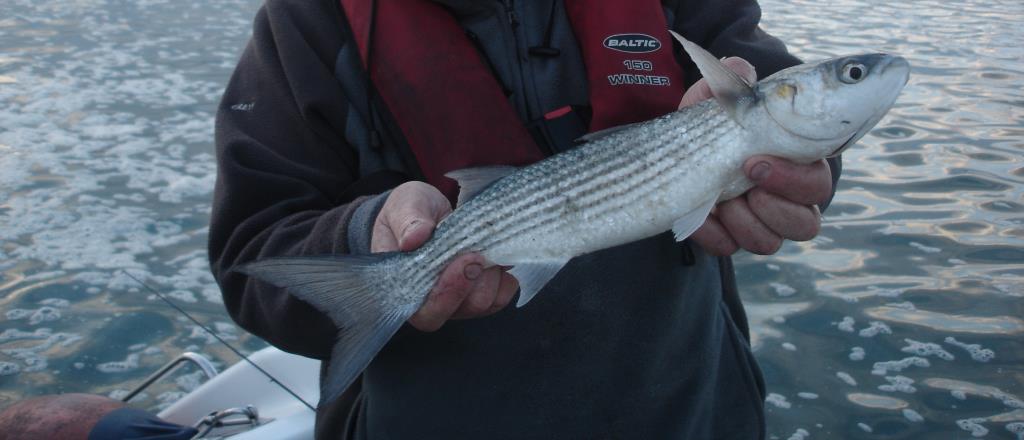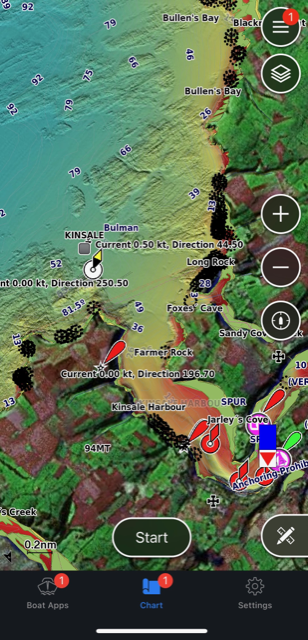* Re-Powering The Operation!

Yes, it’s definitely a big money outlay no matter what you decide to do. There is little cheap in terms of boat angling. Around lockdown time I was thinking about my engine – I decided my hull was fine to carry me forward but I fancied a change in engine. I fancied a change because I felt it was time for an upgrade. My faithful F100 Mariner has been an exemplary performer and continues to be so. But, just like you would your car, a change was in the air.
Buying a new motor is different in many ways from buying a second-hand motor. In the second hand market you are usually looking for a well looked after motor whereas with new you are more looking at the motor you hope that will give you a decent service over the lifetime of the motor.
I have always been driven by technological advances in given areas. I changed my electronics when I felt there had been a lot of change in the more recent models and technology had effectively passed my old units out. Is there movement in the world of outboards since I purchased my last motor?
The first decision necessary is what size motor to I want to get? I currently run an F100 Mariner/Mercury. This engine has been a joy to use and it suits the Warrior 175 well. I am happy with my overall performance in terms of speed and accelleration. You can see the trend is for ever more powerful motors. I see a lot of Warriors sporting 140 or 150hp motors. Apart from everything else – best value for money for performance is important too. There is a considerable leap in pricing between 100hp and 150hp. Will I get the value out of such a price difference? I often hear skippers say – “ I don’t have to drive my 150 as hard as I would a 100hp so it’s better all round, more economical” – I’m not sure I subscribe to that idea and I do like a turn of speed as much as the next man!

Most 115hp motors are the top of a particular range. For example the Mercury/Mariner 115hp is the same motor as the 90/100hp and 75hp. Engine management usually handles the extra horsepower. It makes sense to me now that I should opt for the biggest of the family. So 115hp will be my motor of choice. I think the little extra power will suit the Warrior hull perfectly. It will not give a huge advance in performance, but it will surely give me an extra couple of knots across the rev range.

I began my reading and as you can imagine I was bamboozled by the blurb and the marketing literature! There was only one thing for it – Build a spreadsheet. I set about listing the attributes of my choices so I could see what each manufacturer was offering – From warranty to displacement from gearing to oil capacity I would also factor in dealer location and reputation all into my spreadsheet and hopefully my choice will be made easier.
When I began to research outboards I quickly decided to narrow my search to a few brands and then run my comparisons for those brands. I decided to investigate the latest offerings from Mercury, Tohatsu and Suzuki. Lets be clear here – I honestly think that there no “poor” outboard motor out there, not from the major brands anyway. All the top brands appear to offer good quality motors nowadays. Warranties are at least five years for most brands so really it’s a matter of weighing up the pros and cons of each particular brand and going from there.
From early on I decided against Honda and Yamaha. I have owned a good few Yams over the years and even my first Mariner had a Yam powerhead but I think the bullet-proof reputation has been tarnished a bit over recent years. I have heard of some issues with bigger Yams that I just don’t tend to hear from others. I’ve never owned a big Honda and I hear very good things about them. The only bad word that I have heard mentioned with Honda is corrosion. I found myself leaning towards other brands that may just have better dealer support in my area. Of course there’s the dark horse that is Parsun- They have a 115hp available now. There’s talk of it being a Yamaha clone – Am I ready for taking a chance on a Chinese outboard? Not this time round!

The outsider of my three is the Tohatsu – MFS115. The main reason that it’s on my list is that it is a new motor. Some might say untried, but I am a sucker for something new when there is new tech on offer. Tohatsu were selling Honda’s in the mid-range while this motor was being developed. Tohatsu themselves have a great name in terms of reliability in their smaller motors, in fact they manufacturer many motors for the major brands. They offer at least a 5-year warranty (3+2 lets say). Tohatsu tout the 4-2-1 Tuned Exhaust system as being the leap forward in tech on a 2.0L powerhead at 178kg. A 4.3in digital display is offered as an option. Surprising is that this family of motors now has a 140hp at the top of the range. I wonder about the performance of both the Suzuki and the Tohatsu 140hp – both motors are the same displacement as their 115hp sisters but rev more. You’d have to wonder are they worth the extra price premium?
The Mariner/Mercury 115hp could be my logical motor choice following on from my trusty F100. These motors got a redesign a few years back and there were complete redesigns for many working parts. The powerhead is different from my trusty motor. Mercury would also trumpet about them being easily serviced. Strangely they seem to have retained the trim-system that is prone to corrode. I wonder about all manufacturers claims about fuel economy; should I expect better economy from a new motor? I don’t know has technology improved that side of things too dramatically. Something tells me I should expect quieter running even though my current motor is not what I would call noisy.
There are plenty options to consider with Mercury. Do you got for the bigger lower gear case in the CT model or go for the all out performance model in the Pro XS? I currently have SmartCraft gauges and therefore will need them at least but there are VesselView Mobile Bluetooth options available and a hefty option of the VesselView display. All this running through a 2.1L Powerhead and weighing in a 165kg. I have confidence in the Mercury brand. I have had great service from my engine and the 5-year (End to end) warranty is surely a comfort as well. We are well serviced in my location with good dealers available.
The Suzuki 115BG is an incredibly interesting machine. In terms of new tech and features it tends to leave the others behind.

The big leap forward for the 115BG is the Fly-by-Wire technology. In all other motors there is two mechanical cables betwixt engine and throttle control. These are for your throttle and gear shift. The Suzuki replaces these cables with electronic control modules. This is new tech for the 115BG/140BG but it’s not new tech for Suzuki. It’s just the first time it’s come down to a motor of 115hp. It has existed for some time in the bigger Suzuki engines. So this leads to crisper gear changing and faster/smoother throttle control. It also means that the throttle/gear selector box is now a smaller, easier to fit package. Suzuki boast that these engines are a complete redesign from the previous model. They stress higher compression, redesigned gearbox and better fuel economy than the preceding models. The 115/140 is weighs in at approx 190kg.
Now, you can look at tech in different ways. Some might say tech can bring its own problems and sometimes new stuff can be untried and possible unreliable. In most cases this is not “breakthrough” technology but tried and tested tech that’s just finding it’s way to smaller motors. Think of it this way – Your car hasn’t had a throttle cable in many, many years!
Interestingly, the gearbox ratio of the Suzuki is more akin to the optional CT offered by Mercury. The Suzuki offers a ratio of 2.59:1 whereas the CT Mercury is offering 2.38:1. Suzuki have also modified their lower unit to offer better lubrication and cooling.
The Suzuki offers Key-less ignition. The start stop switch will not operate unless the key fob is close by. This is a big change to me as a user as my ignition key has hardly been out of the ignition since the engine was new. Maybe I’d change my system based around a new system? Certainly it is a good thing to have an engine immobiliser fitted it should deter theft and that can only be a good thing.
The final piece worth mentioning is the new Suzuki water filtration system – MPC or Microplastic Collection Device. This is a filter system that filters used cooling water and takes out any microplastics that have been ingested into the cooling system. Normally these plastics would be spat back out into the sea but Suzuki’s system captures the plastics for disposal and even study. Suzuki reckons all its motors will have this system and you can imagine that a huge amount of motors capturing plastics may just help a bit. Better to be doing something than doing nothing I suppose!
How much does price come into the equation when changing a motor? Obviously it is difficult to compare like for like. The different standard specifications always make price comparison more difficult. I think the base price for most motors is fairly close. You then must factor in the “standard” options and see if those options are worth having. Buying a motor is generally not a four-year deal. Most of us will keep our motors for at least ten years so the purchase is well divided across the years.

Availability is not a difficulty for most manufacturer now. You can basically get a motor fairly quickly after a firm order. Of course, pinning the dealer down for fitting can be a problem as we move towards the summer months. Most engines in each class are of a similar price. You may expect to pay a premium for some extras; like in most cases a stainless prop is not supplied as standard.
You may also want to check out what type of instrumentation is supplied. I have had Smartcraft gauges with my Mariner so I am used to a high level of information being provided, more so than the standard analogue clock. Some digital displays are quite expensive. There is also the option of connecting the motor to a compatible GPS unit. This can be necessary to get fuel consumption data from a modern set-up. Some engines have Bluetooth options (Mercury) while all will connect to a NMEA 2000 network and will allow send data to your plotter – If you can spare the screen space! Is it worth it to have these style displays? I think so. Apart from fuel consumption, temperature, oil pressure, water pressure, fuel level, of course engine trim and speed details as well as engine hours and any errors will also be displayed. Each day I run I zero my trip so at days end I note the distance I have travelled and the fuel I have burned. It has me very tuned into my range. I never tend to spend much time checking fuel consumption during the trip but I am always watching revs and trim while I motor to a mark. It’s all about the balance of speed and comfort.
So these were the choices! As I began to weigh up the pros and cons I spoke to many owners and dealers. I weighed the data from my spreadsheet and it really didn’t take that much deciding: I settled on the Suzuki. It offered the most to me across the areas I was interested in most: Reliability, Modern tech, Warranty, Good local dealership, innovation and of course, looks. My motor would be fitted by the people at Cork Marine, my most local dealership. After a chat with Suzuki I was persuaded to move up a bracket and opt for the DF140BG rather than the 115hp.
So, choice made all that I must do now is wait to get the motor fitted and tested. Once the decision is made there’s no point in going back and mulling over your decision.

You’ll find Part 2 athe THIS link : http://www.topfisher.eu/re-powering-the-operation-2/











